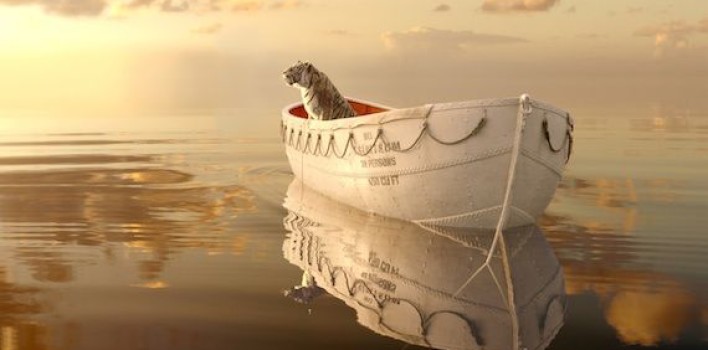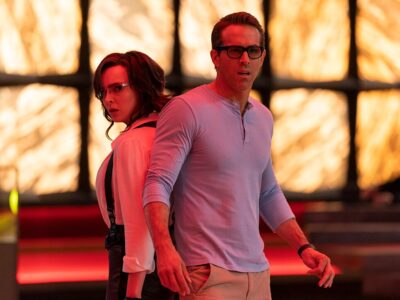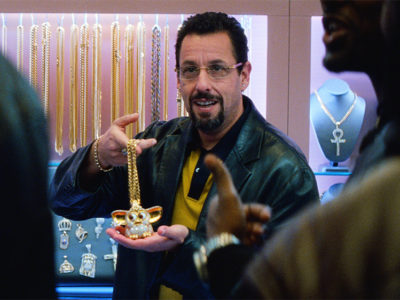Faith, Hope, Pi
Directed By Ang Lee
Rated PG
Writer: So far we have an Indian boy named after a French swimming pool, on a Japanese ship full of animals, heading to Canada.
Adult Pi Patel: Now we have to send our little boy to the middle of the Pacific.
Writer: And make me believe in God.
Adult Pi Patel: Yeah, we’ll get there.
Ang Lee’s Oscar winning adaptation of the Yann Martel novel, The Life of Pi, takes us on a journey of a young boy who finds himself, through a remarkable set of circumstances, in a remarkable circumstance – stranded on a boat in the middle of the Pacific with only his Bengal tiger, Richard Parker, for company. Intrigued? You should be.
The boy, Piscine “Pi” Patel, is a curious and kind-hearted Indian boy who looks for the good in everything, even animals. From a young child, to his survival on the ocean as a young man, to an adult who tries to make the most sense of a truly incredible experience, Pi’s tale calls into question everything we understand about the world and how it works. From faith to doubt to relationships to the very nature and existence of a creator, this story opens us to a world of hope and belief through the memories of an adult Pi Patel trying to share his own tale to a writer who wants to immortalize it.
*SPOILERS*
Pi Patel’s spiritual journey starts when he is still very young, but that does not stop him from jumping in with both feet. Once he begins learning about faith, Pi takes everything in, claiming that one religion leads him to another – even saying at one point in the movie “Thank you Vishna, for introducing me to Christ.” His father, a much more serious and business-like man, tries to disuade the young Patel by encouraging him to abandon religion and to stick to reason, going as far as to say “In a few hundred years, science has taken us further in understanding the universe than religion has in ten thousand.” to which his mother adds, “That is true. Your Father is right. Science can teach us more about what is out there, but not what’s in here” as she motions to her heart. It’s this contention of ideas that form the biggest conflict in the story, and the audience, by the time the story ends — but I don’t want to get ahead of myself.
It is hard to imagine how anyone would react to the circumstances in which Pi finds himself when his family decides to pack up the zoo they own and move across the Pacific to start a new life. It would be even harder to imagine if, already torn by transition, your life is struck by disaster after disaster, starting losing your entire family because the boat you are on, caught in a storm, sinks and all passengers are lost. Through his journey, Pi endures many things that would either kill or cause one to give up on life. But he continues on, each step of the way surviving against the elements, doubt, and the large Bengal tiger that he shares a boat with. While recounting his journey, an older Pi even remarks:
Adult Pi Patel: Faith is a house with many rooms.
Writer: But no room for doubt?
Adult Pi Patel: Oh plenty, on every floor. Doubt is useful, it keeps faith a living thing. After all, you cannot know the strength of your faith until it is tested.
Doubt is one of the biggest hurdles that someone can tackle when it comes to understanding faith of any kind, and in the film, we see a number of reasons why Pi should doubt his child-like belief that there is a God, and, even more, that his God is looking out for him. Pi’s eventual survival and reintroduction to the world gives us the pinnacle moment of the movie when he recounts his tale of woe to two agents from the Japanese shipping company who, rightfully so, disbelieve his fantastical tale of survival on a boat with a wild animal. They implore Pi to give them a story “that won’t make us look like fools… a simpler story… a story we can all believe…” Pi clarifies their request by saying that they want a story “without things you’ve never seen before… without surprises. without animals. without islands.” It’s at this point that we learn an alternate version to the story — one in which animals that initially survived on the life boat, before being killed, were actually survivors from the sinking ship, including Pi’s mother. Through a much more grim version of the story, we hear Pi describe human beings as ruthless, uncaring, doing deplorable acts just to survive, freed from the assumed decency of humanity by the desperation of their situation. There was nothing spectacular, there was nothing supernatural, there was only humanity and it’s compassionless fight for survival.
Adult Pi Patel: Can I ask you something? I’ve told you two stories about what happened out on the ocean. Neither explains what caused the sinking of the ship, and no one can prove which story is true and which is not. In both stories, the ship sinks, my family dies, and I suffer.
Writer: True.
Adult Pi Patel: So which story do you prefer?
Writer: The one with the tiger. That’s the better story.
Adult Pi Patel: Thank you. And so it goes with God.
To Pi, after all he had seen and been through, it made more sense to believe that that the world had purpose and was held together by something bigger than human desire and survival. Pi longed for meaning in a world that seemed to have none, and that is exactly where the movie wants us to be — open to a world that is more than the facts that the agents from the Japanese shipping company came to collect, and more than the facts that the Writer came to gather for his book. Life of Pi, and Yann Martel want us to see the value of having a belief that transcends scientific evidence. Through characters like Santosh Patel, Pi’s father, we are taught that using rational thinking is the key to understanding the universe, and, in the film, we see that the natural world has it’s place, but it also has it’s limitations.
This story implores its viewers to open up their heart and mind to the possibility that there is something more to life than what can be observed, and pulls at something rudimentary that every human being tries to answer for him or herself — why are we here? If everything were to be stripped away, what makes us believe we are any different from animals? Some people would say “nothing.” But I think the movie declares that it is more beautiful and valuable to believe than it is to go through life doubting everything on the basis of what seems most rational to us. In Pi, we have a character who chooses to endure a world of suffering and loss by keeping his faith in a God who cares for him in miraculous ways. From the very ability to survive with a ferocious wild animal in a tiny confined space to flying fish to an island that no one has ever seen that is both life-giving and deadly, he sees an omnipotent hand guiding his path. That leads him to the belief, though that belief may appear foolish, that there is hope – and that hope sustained him across the Pacific Ocean in the most unlikely of circumstances.
“To choose doubt as a philosophy of life is akin to choosing immobility as a means of transportation.” -Yann Martel
*As always, this is not the only thing that was noteworthy in the movie. If you have something that struck you, or you agree/disagree with my interpretation of the theme — leave a comment below. The best thing about movies is that they are rarely one-dimensional and discussion invites discovery!







